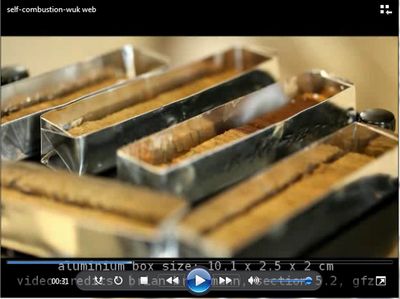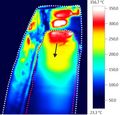Outcome
Movie of a combusting sediment bar
Movie (~ 3.6MB) (Dräger et al. 2016).
The video illustrates the flameless combustion of freeze-dried sediment samples originated from 14 m depth from a palaeolake which filled up with sediments during the Holocene (Wukenfurche). The combustion was initiated by a self-ignition directly after ventilating the vacuum freeze drier chamber. Freeze-drying of sediment samples is a commonly applied method in lake sediment research to dry samples for conservation issues, for geochemical analyses and for resin impregnation required for thin section preparation. To our knowledge there have been no reports about self-combustion of organic-rich lake sediments during or after the freeze-drying procedure so far. The flameless combustion lasted for approximately 10-20 minutes and reached temperatures of about 350°C. We assume that the self-combustion process was initiated by exothermic oxidation reactions, which were favoured by a combination of factors including the presence of abundant fine-grained iron sulphides in the organic-rich sediments. Self-combustion could be prevented by ventilating the vacuum chamber after freeze-drying with N2 instead of air.
ICLEA - A Virtual Institute within the Helmholtz Association




